1.4 The Peripheral Nervous System, Neurotransmitters and Hormones
The Peripheral Nervous System
Our nervous system can be divided into two major parts: the central nervous system and the peripheral nervous system (PNS). We covered the central nervous system (the brain and spinal cord), in the previous topic, and will now turn to the PNS. The main role of the PNS is to facilitate the communication of the body with the spinal cord and the brain. It contains two subsystems: the somatic nervous system (SNS) and the autonomic nervous system (ANS).
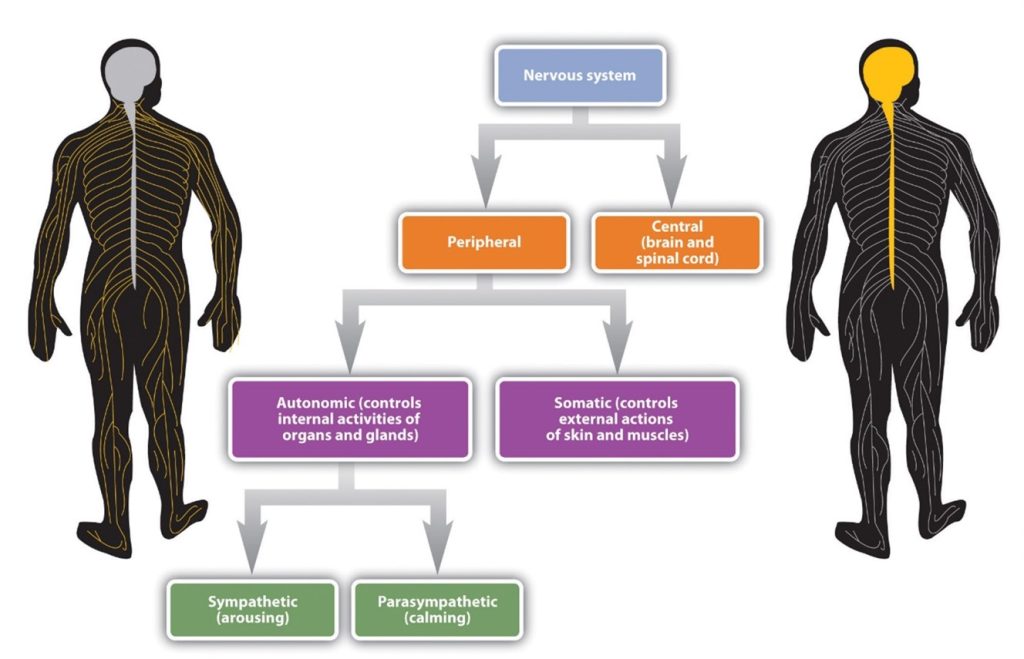
Please watch the following video to learn more about the nervous system [2:01]:
The SNS consists of the cranial nerves and the spinal nerves and is involved in voluntary movement. The ANS controls vital organs like the heart, lungs and the digestive system and participates in regulatory functions like blood circulation and reflex behaviours (e.g., respiration, coughing and vomiting). The ANS is regulated by the hypothalamus, which we described earlier in this chapter. Since the hypothalamus gets activated when we are aroused, emotional experiences frequently involve changes in our ANS.
The ANS can be further divided into two main parts: the sympathetic and the parasympathetic nervous system (there is a third system, the enteric nervous system, but we will not cover this system in this eBook).
Sympathetic Nervous System
The sympathetic nervous system is of great importance to this eBook since it is involved in the experience of stress and intense emotions. You will most likely have heard about it as the fight or flight system. This system prepares our bodies for action when we perceive danger, threat or some other form of emergency, like witnessing an accident unfold in front of us. When we are faced with danger or another type of emergency, the sympathetic nervous system will kick in in various ways, including by increasing our blood and oxygen flow to the essential body parts like the heart, lungs and large muscle groups. At the same time, other functions like digestion and salivation are placed on standby. We will learn more about this system in Chapter 3 when we consider the stress response in more detail.
Parasympathetic Nervous System
The parasympathetic nervous system balances the sympathetic nervous system’s actions during the stress response. Its role is mainly to provide rest, repair, and energy storage. It is also activated by internal stimuli like the arrival of food in the digestive system.
Methods and Digital Technologies to Measure Brain Activity
Many of the readings that discuss implications from neuroscience research for conflict management mention methods and digital technologies that are commonly used in such research. If you don’t have a background in medicine or neuroscience, you may not be familiar with all these methods. Therefore, we will very briefly introduce you to the most used methods to facilitate your understanding of such research. These methods and technologies include:
- EEG (electroencephalography)
- MEG (magnetoencephalography)
- CT (computed tomography)
- PET (Positron emission tomography)
- MRI (magnetic resonance imaging)
- fMRI (functional magnetic resonance imaging).
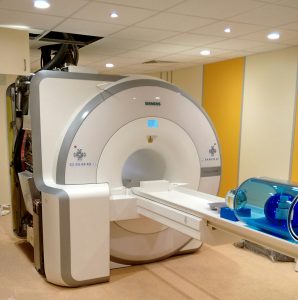
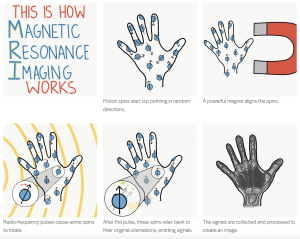
For a brief overview of neuroimaging, please watch [2:05]:
Extension:
You may also want to access the blog post “EEG vs. MRI vs. fMRI – What are the Differences?” in which Dr Bryn Farnsworth explains some of the major methods and techniques and their differences in easy-to-understand language.
Neurotransmitters and Hormones
Neuroscience studies relating to conflict and conflict management frequently focus on the role of neurotransmitters and hormones. To help you make sense of these studies, we will briefly introduce you to some of the main neurotransmitters and hormones in this section. Neurotransmitters and hormones are the chemical messengers of the human body. Summarised as neurochemicals, they differ in their way of transmission (neuromodulators are another group of neurochemicals, but we will not consider this distinction in this eBook). Neurotransmitters are molecules used by our nervous system to transmit messages between neurons, or from neurons to our muscles. This communication occurs at synapses, which we briefly discussed earlier in this chapter.
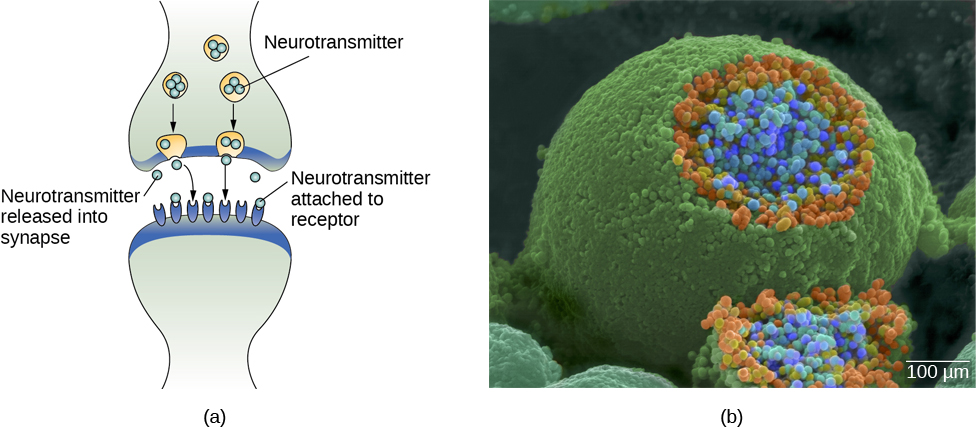
Some neurochemicals function as both neurotransmitters and hormones, including epinephrine (adrenaline) and norepinephrine (noradrenaline). Major neurotransmitters that are important to cognition, emotions and other phenomena relating to conflict and conflict management and that are frequently discussed in relevant literature are dopamine, serotonin, melatonin and endorphins.
Please see Table 1 for information about these neurotransmitters (of which some also function as hormones), including the main processes in which they are typically involved.
| Dopamine | Motor control, movement, mood, learning, planning, motivation, processing of reward, psychosis
Involved in addictions, including drugs and other addictive behaviours such as gambling |
| Norepinephrine (Noradrenaline) | Both the primary neurotransmitter in the sympathetic nervous system and a neurohormone. Involved in:
|
| Serotonin | Mood, sleep, aggression, memory, appetite |
| Epinephrine (Adrenaline) | Coordination of eating and regulation of blood pressure
As a hormone, it stimulates the central nervous system |
| Melatonin | Sleep; secreted from the pineal gland; sensitive to light |
| Endorphins | Pain and stress regulation, general wellbeing, pleasure
Increased release through vigorous exercise, orgasm |
Hormones
Like neurotransmitters, hormones influence people’s behaviour and attitudes. However, they are not involved in communication between neurons, but between different parts of the body. Hormones are produced in the endocrine glands and transmitted via the bloodstream to trigger a reaction in specific cells of the body.
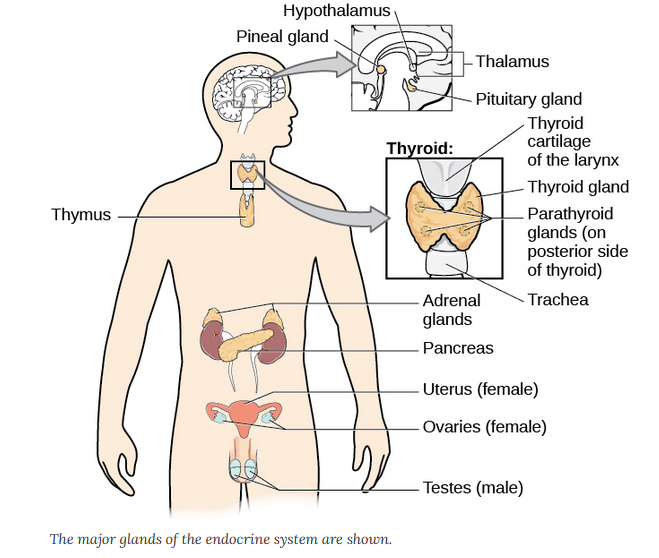
While there are more than 50 different hormones involved in people’s general bodily functions, we will focus on those that are of interest to study people in conflict including:
Norepinephrine (noradrenaline) and epinephrine (adrenaline)
As indicated in the table above, the two important neurotransmitters adrenaline and noradrenaline are also neurohormones, which are released from the adrenal glands into the bloodstream to stimulate the central nervous system. When confronted with danger or other stressful situations, we would experience this release as the so-called “adrenaline rush”. Because of their involvement in the stress response, epinephrine and norepinephrine are of particular interest for this eBook (we will deal with the stress response in Chapter 3 when we focus on emotions and stress). When released into the bloodstream in response to stress, both neurohormones have the following effects:
- increasing blood sugar levels
- increasing heart rate
- increasing contractility of the heart.
Additionally, epinephrine is also involved in relaxing muscles in the airways to facilitate breathing, while noradrenaline is involved in narrowing blood vessels to increase blood pressure.
Cortisol is one of the two key hormones (the other one is epinephrine/adrenaline) involved in the stress response. Cortisol is produced in the adrenal glands and is predominantly involved in arousal.
Oxytocin and Vasopressin are released from the pituitary gland and act as both neuromodulators and hormones (Freberg, 2019). Oxytocin is particularly important to social cognition and social behaviour (e.g. bonding) (Kosfeld et al., 2005), and is therefore also important for conflict management. For example, oxytocin appears to influence empathy of people in conflict (Influs et al., 2019), as well as levels of trust (Bianco et al., 2021). Furthermore, both oxytocin and vasopressin are involved in stress-related processes in group conflicts (De Dreu et al., 2012; Chatterje & Luterbach, 2017).
The sex hormones testosterone and estrogen are implicated in aggression and gender differences in some cognitions and emotions (Ferberg, 2019, p. 51).
Extension:
To learn more about hormones and how they may affect human behaviour and attitudes, please watch:
Endocrine System, Part 1 – Glands & Hormones: Crash Course Anatomy & Physiology #23 [10:25].

